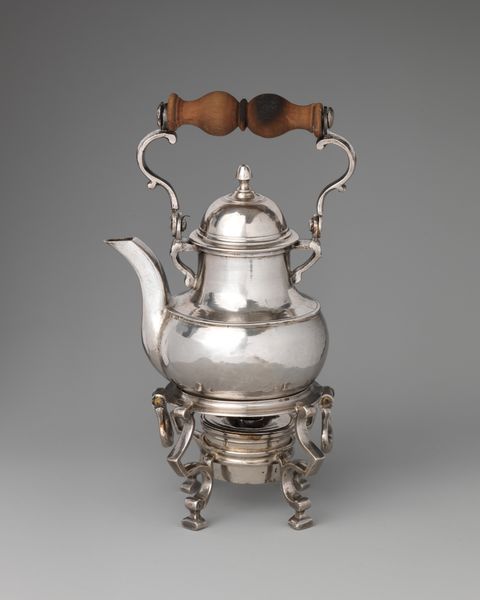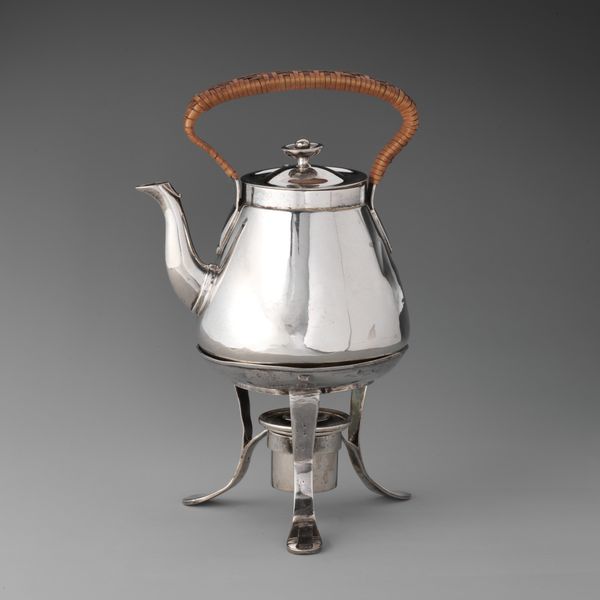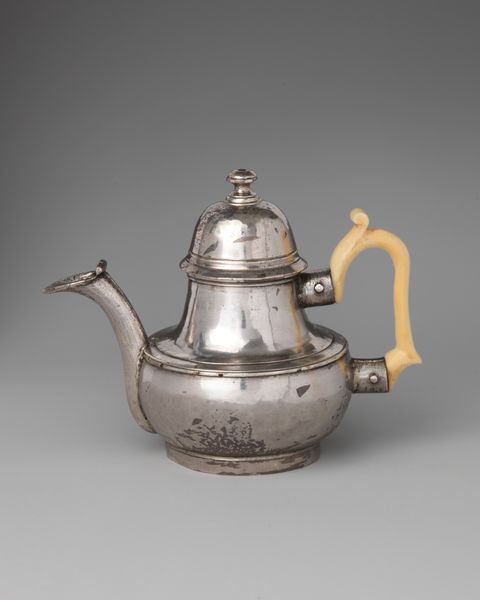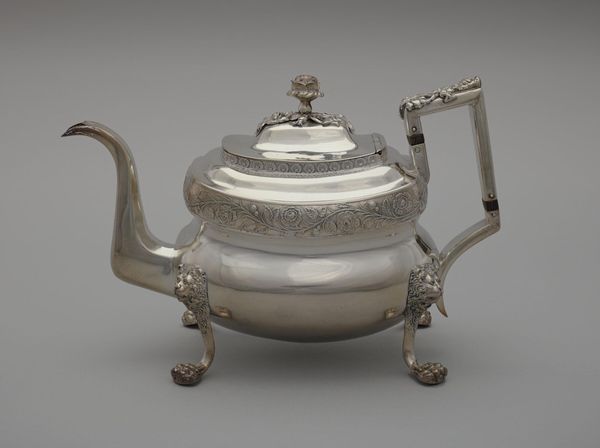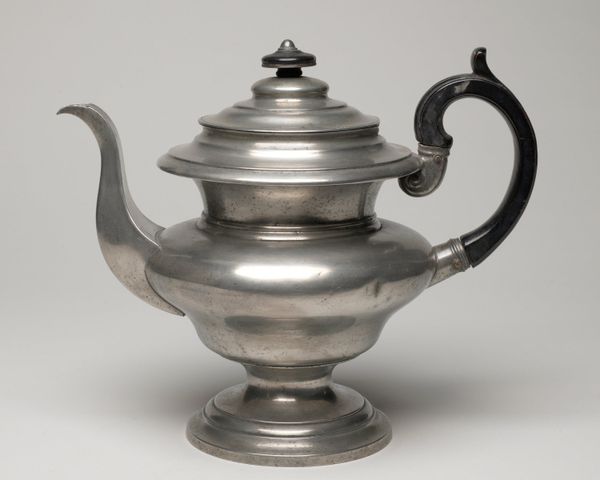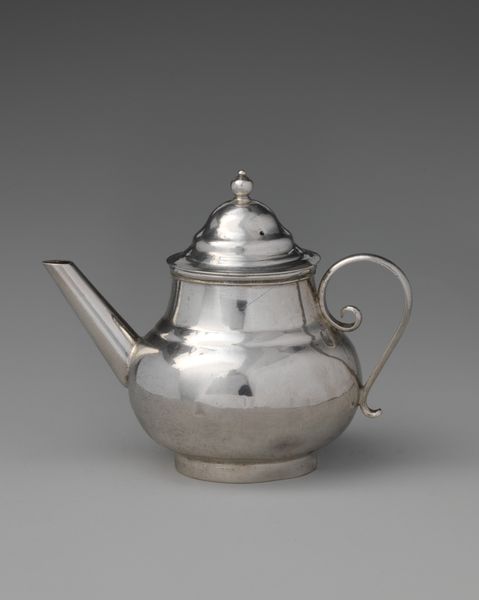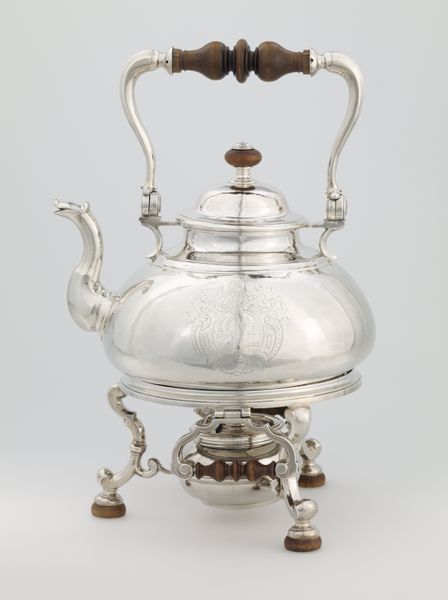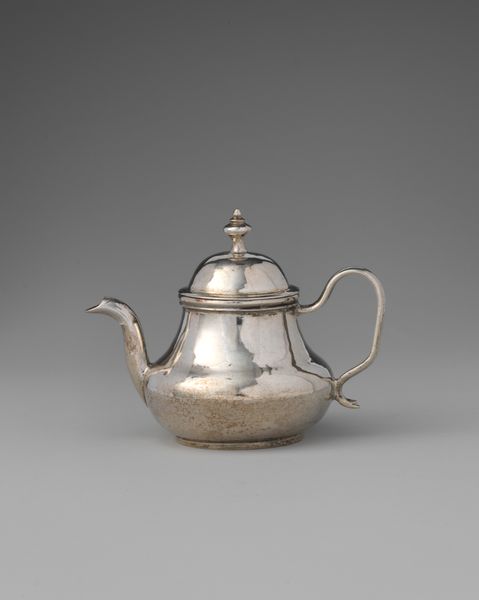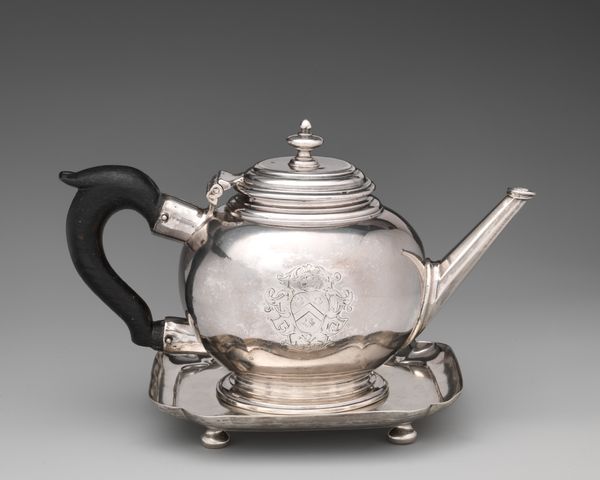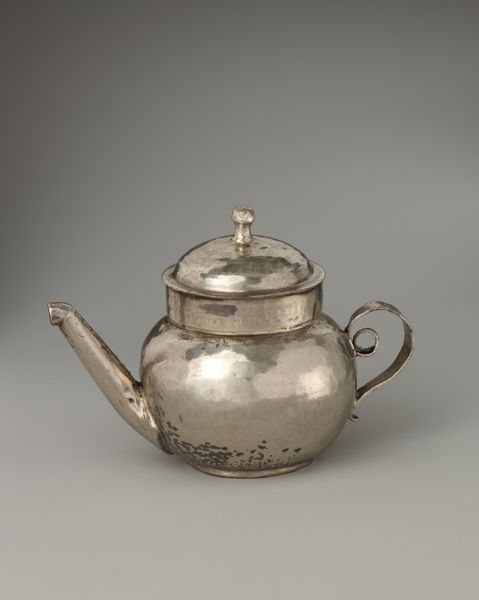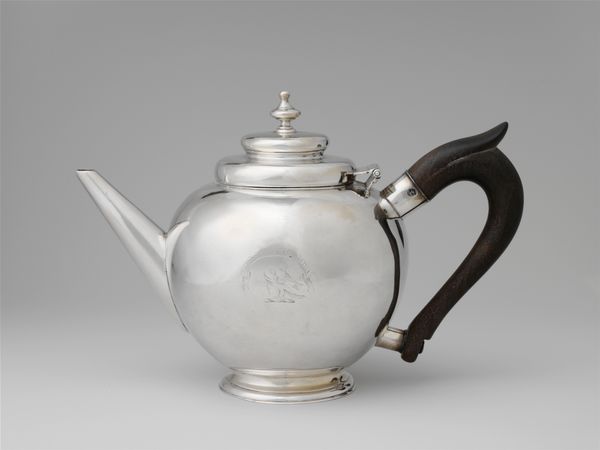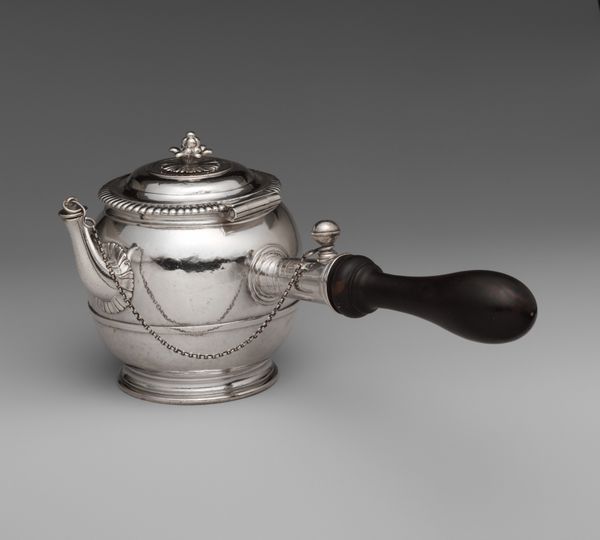
Miniature kettle with cover, stand, and lamp 1715 - 1735
0:00
0:00
silver, metal, sculpture
#
silver
#
baroque
#
metal
#
sculpture
#
decorative-art
Dimensions: Height: 3 3/16 in. (8.1 cm)
Copyright: Public Domain
Editor: So this is a Miniature kettle with cover, stand, and lamp, crafted sometime between 1715 and 1735. It's currently at the Metropolitan Museum of Art. The piece is mostly silver, with some other metal, and a dark handle - wood, perhaps? What immediately strikes me is its Baroque styling; it looks like a study in contrasts between curved lines and angular forms. How do you interpret this work from a formalist perspective? Curator: Indeed. If we consider the intrinsic elements, the high polish of the silver offers dynamic reflections which play against the object's curves. Observe how the artist employs symmetry to generate stability, and, how that symmetry is interrupted by the spout - this tension contributes a spatial complexity that goes beyond its small scale. Do you perceive the dark wooden handle as a counterbalance to the luster of the kettle? Editor: Absolutely, it creates a compelling visual weight at the top, preventing the entire piece from appearing too light or ethereal. Also the placement of the handle makes it not only functional but draws the viewers eyes in a satisfying way. The curls on the stand repeat on the handle fixture, and visually tie the sculpture together. Curator: Precisely. Moreover, think about the relationship between void and volume in the lamp element. Its hollow center is surrounded by curved metal supports, creating an engaging contrast of open and closed form that changes according to viewer perspective and the angle of lighting. This demonstrates Baroque principles. Do you appreciate the contrast between light and dark too? Editor: Definitely! And thinking about those contrasts, that interplay makes the artwork all the more compelling from an aesthetic perspective. It’s a beautiful articulation of form and material. Curator: Agreed. It is through precisely such careful examination of form, composition, and the interaction of material properties, that we are able to begin deciphering meaning in such works. We’ve moved towards understanding this kettle and its Baroque influence.
Comments
No comments
Be the first to comment and join the conversation on the ultimate creative platform.
